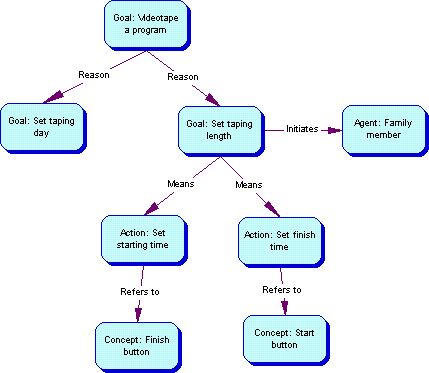
Conceptual Graph Analysis
What is a conceptual graph analysis?
Constructing a conceptual graph is similar to concept mapping, but it includes a formal and detailed collection of nodes, relations, and questions. The nodes can include more than just concepts. Nodes can be goals, actions, or events. There are specific relations for each type of node, and a set of formal, probing questions is developed for each node type. Basically, conceptual graph analysis has two stages. The first stage consists of the task analyst or expert creating a basic conceptual graph. The second stage consists of the analyst or expert using the probing questions to find a deeper layer of information for the graph. The analyst or expert may opt to include a third stage of validating the conceptual graph by having an expert perform the task to check for missing information (Jonassen, Tessmer, & Hannum, 1999).
How do I conduct a conceptual graph analysis?
The following are six steps to follow in conducting a conceptual graph analysis:
Can I see an example of a conceptual graph analysis?
Excerpt of a conceptual graph on operating a video recorder:

Jonassen, D.H., Tessmer, M., Hannum, W.H. (1999). Task Analysis Methods for Instructional Design. Mahwah, New Jersey: Lawrence Erlbaum Associates, Publishers.